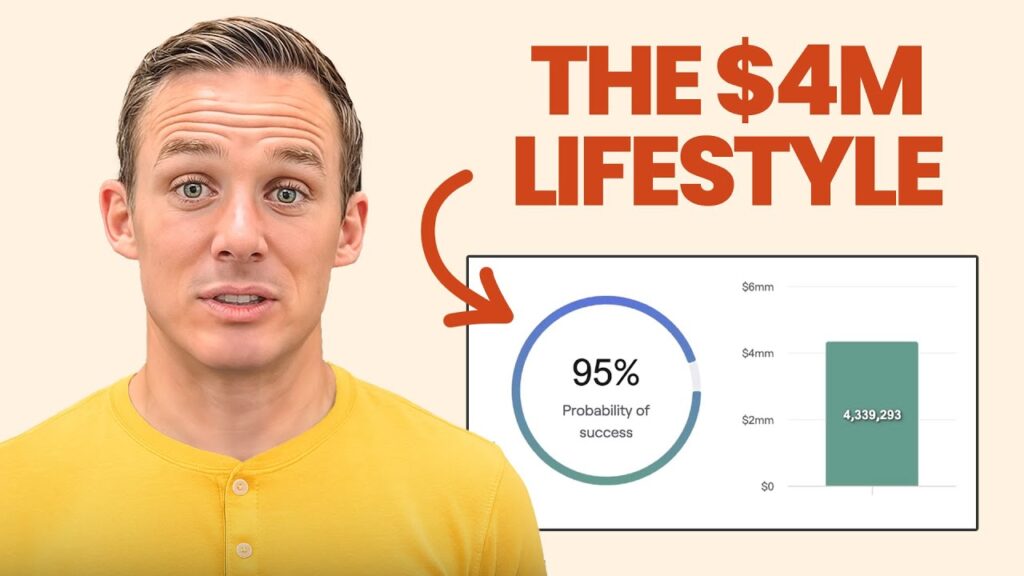How Much Can You Spend in Retirement with $4 Million? A Real-Life Financial Plan

Imagine you’re 60 years old and sitting on a $4 million retirement portfolio. Sounds like you’re set, right? But the real question isn’t just “Do I have enough?” It’s “How much can I actually spend—and how can I make this money work for the life I want?”
That’s the situation Tommy and Monica are facing. They’ve spent their lives saving, investing, and paying off property. But now they need a strategy—not just to preserve their wealth, but to enjoy it.
Let’s walk through their plan, because whether you have $4 million, $400,000, or $10 million, the principles here apply to everyone aiming for financial independence.
The Snapshot
Tommy is 61, Monica is 62. Together, they’ve built:
- $4M in retirement savings (across joint investment accounts, 401(k)s, IRAs, and Roth accounts)
- A $925,000 home with a mortgage and $7,000 in annual property taxes
They’re stable. But like many, they’ve defaulted to the idea of working until 65—just because that’s what everyone else does.
The Retirement Goals
Their vision?
- Retire by 65—but earlier if financially possible
- Spend $12,000/month (after taxes) for living expenses
- Add $40,000/year for travel during their first 10 years of retirement
They don’t just want security—they want a lifestyle. And they want to know: is this sustainable?
From Accumulation to Distribution
They’ve done the hard part—accumulating the wealth. Now it’s about turning that portfolio into predictable, sustainable income. Here’s where strategy matters:
- Tax-efficient withdrawals: Blending withdrawals across taxable, tax-deferred, and tax-free accounts (like Roth IRAs) helps lower their lifetime tax bill.
- Smart sequencing: Drawing from brokerage accounts first allows their retirement accounts to grow tax-deferred longer.
- Timing Social Security: Delaying benefits until age 70 can maximize payouts. But the decision depends on how long they plan to work and their health status.
- Healthcare gap: Planning for healthcare before Medicare kicks in at 65 is crucial—those premiums and out-of-pocket costs can eat into that $12K/month.
Lifestyle vs. Longevity
If Tommy and Monica retire at 65 and live until age 90, that’s 25 years of spending. Their plan—$12,000/month plus $40,000/year of travel—means they’ll spend close to $200,000/year, or $5 million over 25 years. Even with investment growth, they’ll need to adjust for inflation and market volatility.
But with proper planning—including conservative growth estimates, dynamic withdrawal strategies, and inflation modeling—they’re on track.
The Emotional Side of Retirement
They also learned something bigger: retirement isn’t just about money. It’s about how you want to live.
They don’t love their current jobs. They assumed they’d keep working because everyone else does. But they’re realizing the real value of their portfolio is freedom. The freedom to stop working when they want. To travel. To enjoy the next chapter—intentionally.
Lessons for Everyone
Even if you don’t have $4 million, the big takeaways apply:
- Define your lifestyle goals before crunching numbers
- Know where your income will come from—brokerage, IRA, Roth, or Social Security
- Plan for healthcare gaps and inflation
- Don’t blindly follow the retirement age “rule”
- Reframe money as a tool for living—not just saving
Tommy and Monica’s story is more than just math. It’s a reminder that your retirement portfolio should work for you, not the other way around.
You should always consult a financial, tax, or legal professional familiar about your unique circumstances before making any financial decisions. This material is intended for educational purposes only. Nothing in this material constitutes a solicitation for the sale or purchase of any securities. Any mentioned rates of return are historical or hypothetical in nature and are not a guarantee of future returns.
Past performance does not guarantee future performance. Future returns may be lower or higher. Investments involve risk. Investment values will fluctuate with market conditions, and security positions, when sold, may be worth less or more than their original cost.







